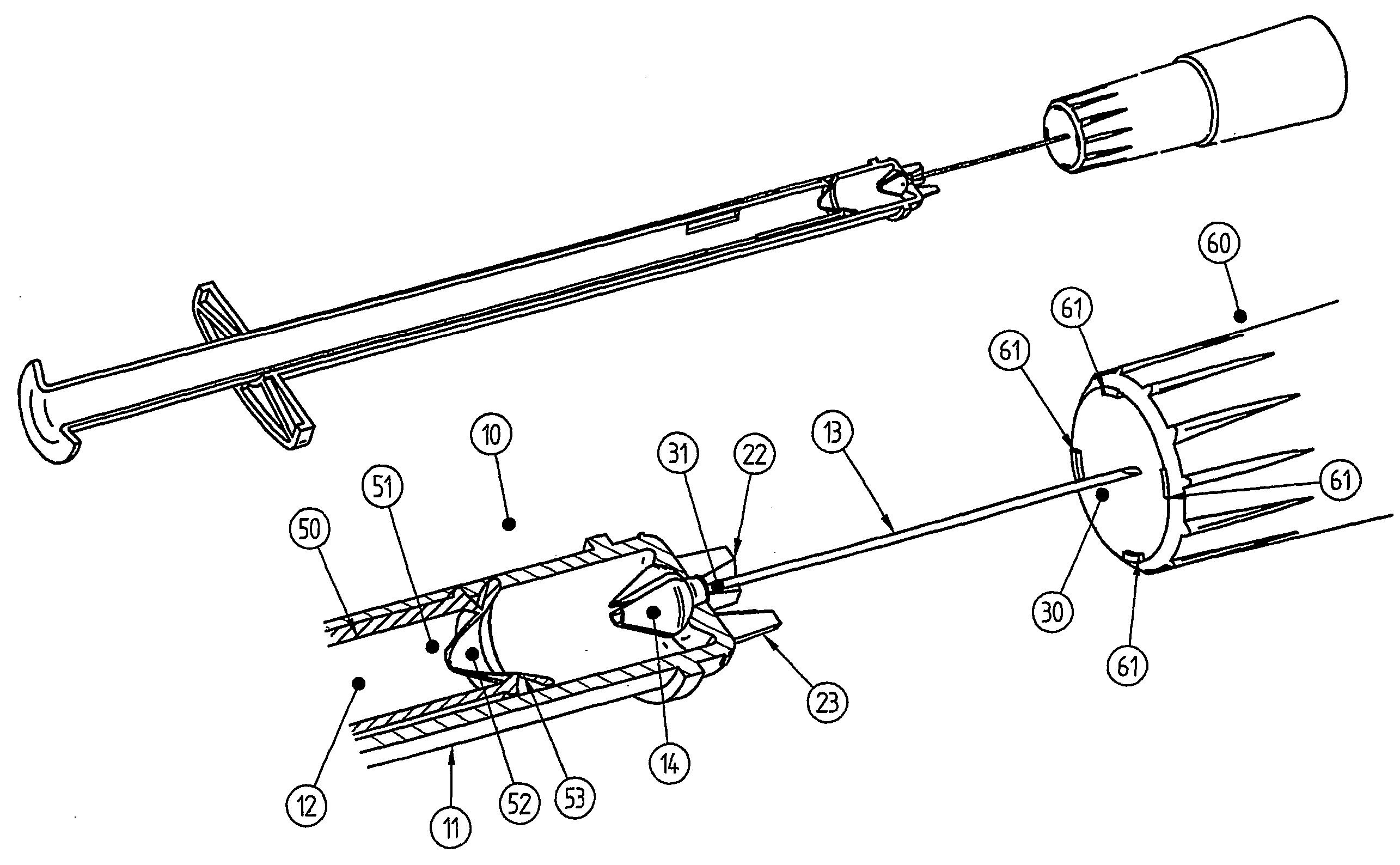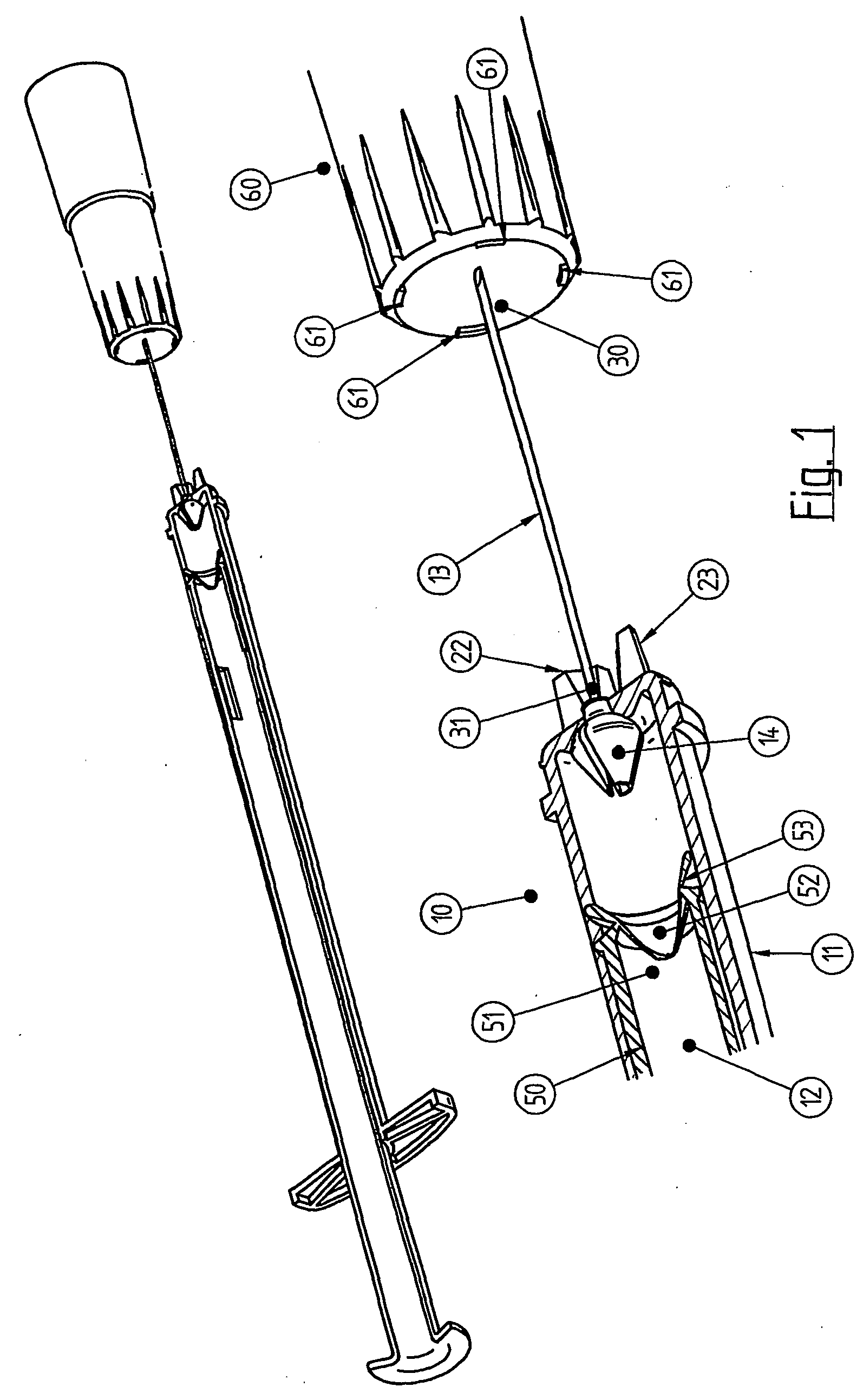Single use syringe
- Summary
- Abstract
- Description
- Claims
- Application Information
AI Technical Summary
Benefits of technology
Problems solved by technology
Method used
Image
Examples
Embodiment Construction
[0042] Referring to the drawings, and initially to FIG. 1, there is illustrated a single use syringe 10 which has a syringe body 11, a plunger 12 which slides along the syringe body, a needle 13 which can be of conventional design, and a needle holder 14.
[0043] Syringe 10 has an elongate syringe body as is known. The syringe body has a forward end portion 15 and a rearward end 16. The rearward end is open to allow the plunger to pass into and out of the syringe body. A radially extending flange 17 is attached to the rearward end 16 of the syringe body, as is known.
[0044] The syringe body differs from conventional syringes in the forward end portion 15. This is best illustrated in FIGS. 2-5. The forward end portion has a radially extending circumferential rib which functions to facilitate removal of the integrally formed cap 60 as will be described in greater detail below.
[0045] The forward end portion 15 has a front face 20. Front face 20 is provided with a more or less central open...
PUM
 Login to view more
Login to view more Abstract
Description
Claims
Application Information
 Login to view more
Login to view more - R&D Engineer
- R&D Manager
- IP Professional
- Industry Leading Data Capabilities
- Powerful AI technology
- Patent DNA Extraction
Browse by: Latest US Patents, China's latest patents, Technical Efficacy Thesaurus, Application Domain, Technology Topic.
© 2024 PatSnap. All rights reserved.Legal|Privacy policy|Modern Slavery Act Transparency Statement|Sitemap



